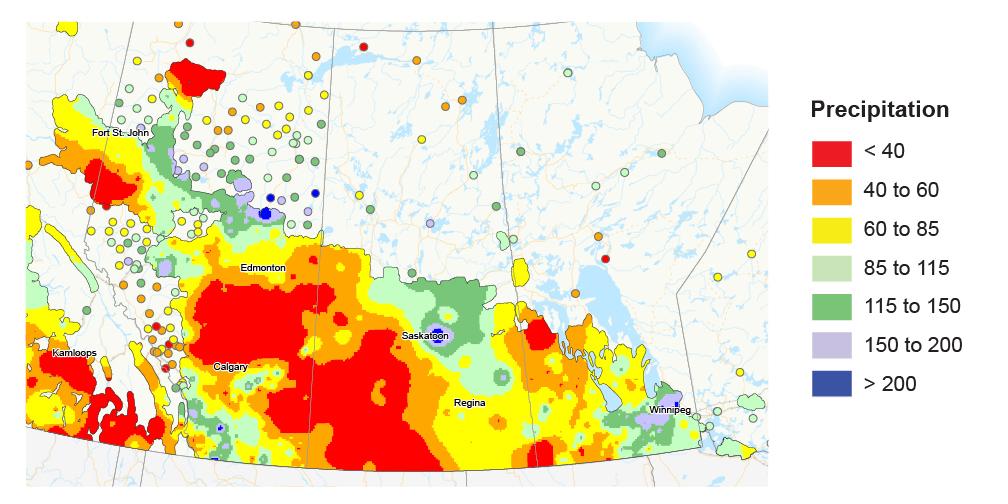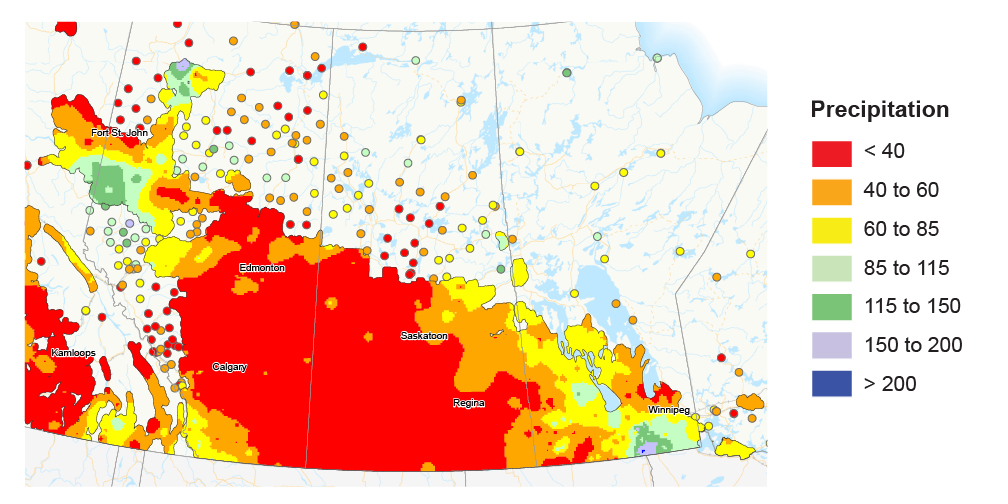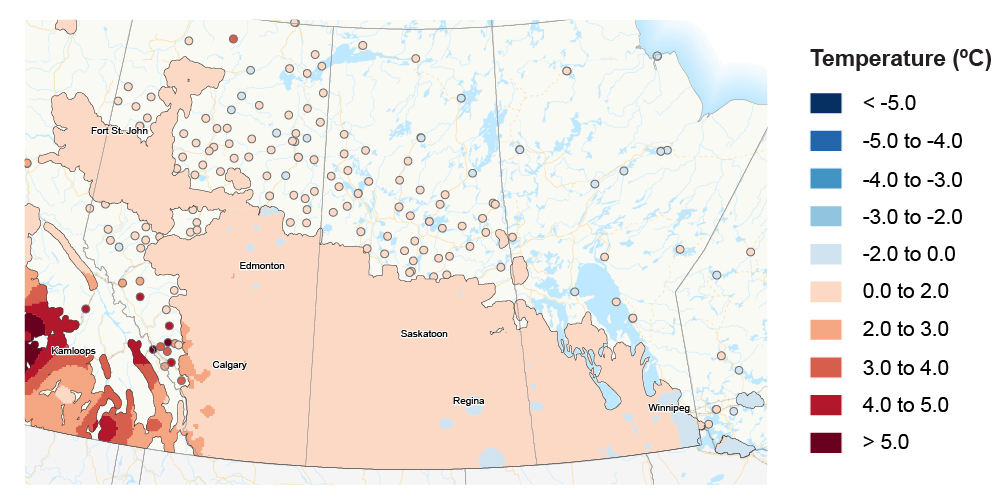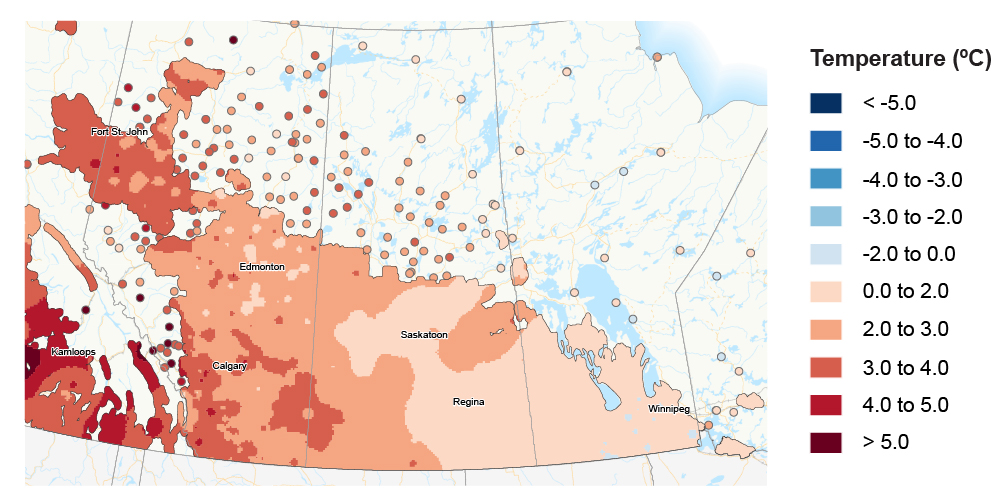Barley Harvest Annual Report 2022
Growing and harvesting conditions
In 2022, the growing season in Alberta began with dry conditions and cool temperatures. The rainfall in June, however, was much higher than normal (Figure 1.1) and supplied enough moisture for crop growth. From the beginning of July to the end of the growing season, temperatures were above average, which resulted in favourable growing conditions that advanced the progress of harvest by two to three weeks (Figures 1.6, 1.7 and 1.8). The favourable weather conditions during the growing season and harvest resulted in above average yields and quality.
In Saskatchewan, cool temperatures and early spring snowstorms delayed seeding for many producers. By the end of May, producers in western Saskatchewan were close to being finished seeding, while many in the east were behind schedule due to rain and extremely wet fields. Across the province, crops grew quickly in June and July due to sufficient rainfall and relatively warm weather (Figures 1.1, 1.2 and 1.6). Hot and dry weather in August allowed for good harvest progress, especially in the southwest and west-central regions (Figures 1.3 and 1.7). The east-central region received heavy rainfall, which slowed down the maturation of crops or halted harvest. In September, the weather remained warm and dry, and producers were able to harvest their crop without any major issues (Figures 1.4 and 1.8).
In Manitoba, a very wet spring led to overland flooding and saturated soils, and seeding was delayed by up to four weeks. A warm summer followed in July, allowing crops to reach their expected development for that time of year (Figure 1. 6). Rain in July and August (Figures 1.2 and 1.3) resulted in crops with average and above average yields. Manitoba had a lengthy harvest due to late seeding and late September rain in some areas. A generally warm and dry September (Figures 1.4 and 1.8) resulted in barley with good yields and quality.
Figure 1.1 Percent of average precipitation in June 2022Footnote1

Figure 1.2 Percent of average precipitation for July 2022Footnote1

Figure 1.3 Percent of average precipitation in August 2022Footnote1

Figure 1.4 Percent of average precipitation in September 2022Footnote1

Figure 1.5 Mean temperature difference from normal for June 2022Footnote1

Figure 1.6 Mean temperature difference from normal for July 2022Footnote1

Figure 1.7 Mean temperature difference from normal for August 2022Footnote1

Figure 1.8 Mean temperature difference from normal for September 2022Footnote1

"Page details"
- Date modified: